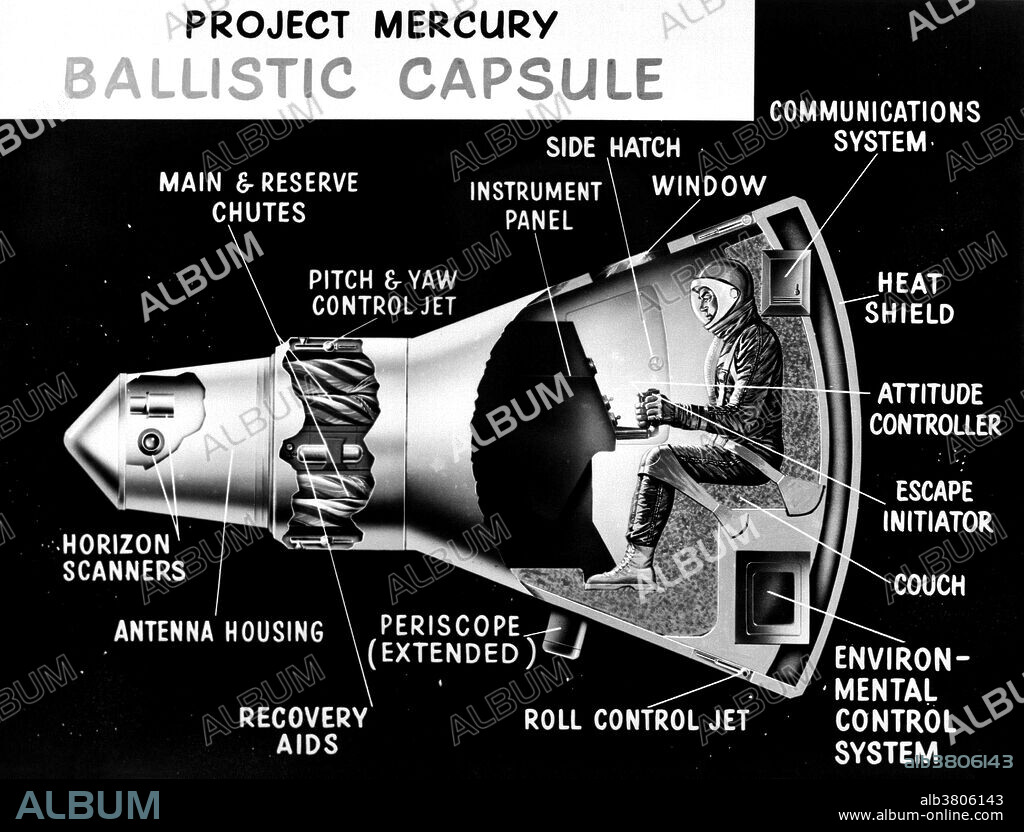alb3806143
Mercury Capsule, 1959

|
Add to another lightbox |
|
Add to another lightbox |



Title:
Mercury Capsule, 1959
Caption:
Cutaway drawing of the Mercury capsule was used by the Space Task Group at the first NASA inspection, on October 24, 1959. The Mercury spacecraft was 10.8 feet long and 6.0 feet wide; with the launch escape system added, the overall length was 25.9 feet. With 100 cubic feet of habitable volume, the capsule was just large enough for a single crew member. Inside were 120 controls: 55 electrical switches, 30 fuses and 35 mechanical levers. The heaviest spacecraft, Mercury-Atlas 9, weighed 3,000 pounds fully loaded. The spacecraft was cone shaped, with a neck at the narrow end. It had a convex base, which carried a heat shield consisting of an aluminum honeycomb covered with multiple layers of fiberglass. The astronaut lay in a sitting position with his back to the heat shield. A form-fitted fiberglass seat was custom-molded from each astronaut's space-suited body for maximum support. Near his left hand was a manual abort handle to activate the launch escape system if necessary prior to or during liftoff, in case the automatic trigger failed.
Credit:
Album / NASA/Science Source
Releases:
Model: No - Property: No
Rights questions?
Rights questions?
Image size:
4200 x 3195 px | 38.4 MB
Print size:
35.6 x 27.1 cm | 14.0 x 10.7 in (300 dpi)
Keywords:
1950S • 1959 • 20 XX TWENTIETH CENTURY • 20TH CENTURY • 20TH • AEROSPACE • ART • ARTWORK • ASTRONAUTICS • BW • CAPSULE • CELEBRITIES • CELEBRITY • DIAGRAM • DRAWING • EVENT • EVENTS • FAMOUS • GRAPHIC • HISTORIC • HISTORICAL • HISTORY • ILLUSTRATION • ILLUSTRATIONS • IMPORTANT • INFO GRAPHIC • INFO-GRAPHIC • INFOGRAPHIC • MANNED SPACE FLIGHT • MERCURY CAPSULE • MERCURY PROGRAM • NOTABLE • PROJECT MERCURY • RESEARCH • SCIENCE • SPACE EXPLORATION • SPACE FLIGHT • SPACE PROGRAM • SPACE RACE • SPACE SHIP • SPACE TRAVEL • SPACECRAFT • SPACEFLIGHT • SPACESHIP • TECHNOLOGICAL • TECHNOLOGY • TWENTIETH CENTURY • WELL-KNOWN
 Pinterest
Pinterest Twitter
Twitter Facebook
Facebook Copy link
Copy link Email
Email

